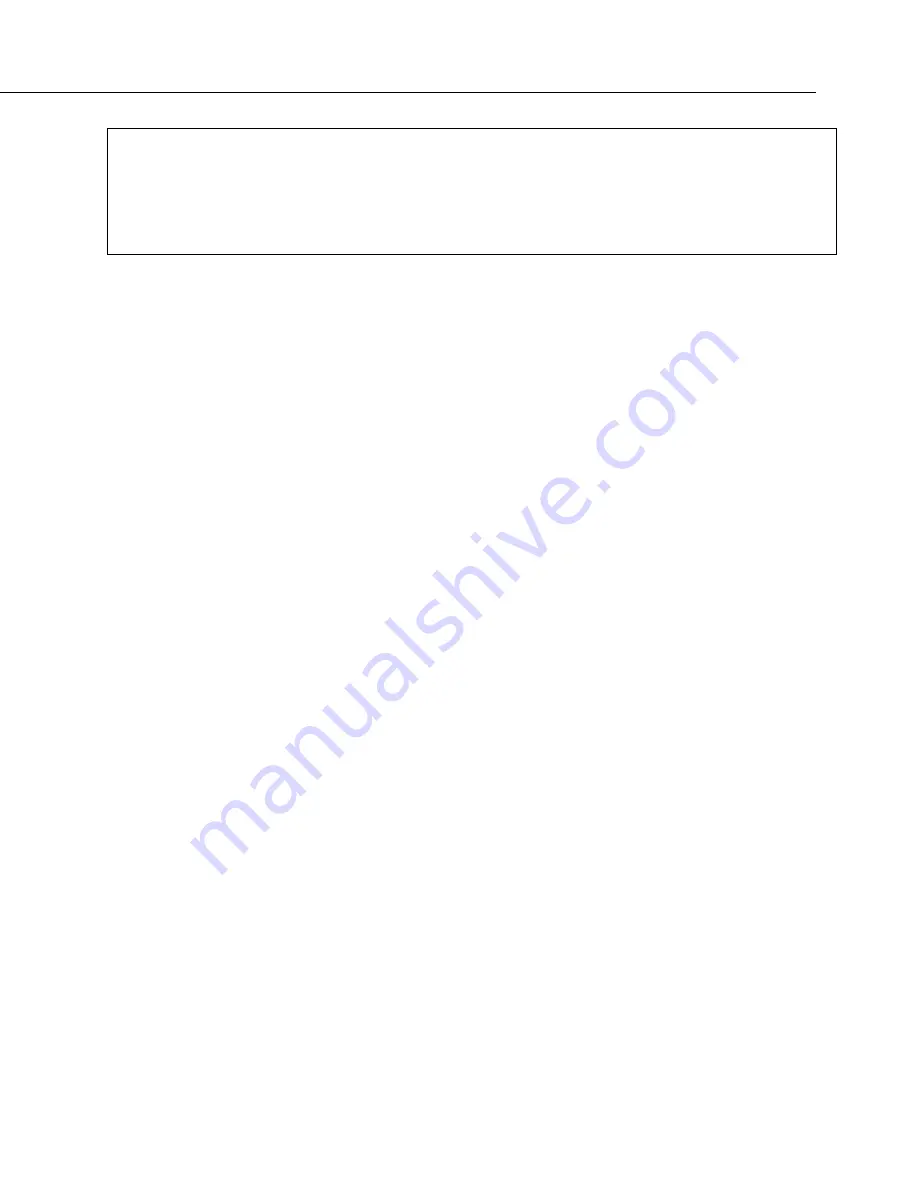
Section 7. Installation
259
FlagsBool8(1) = Flags
AND
&HFF
'AND 1st 8 bits of "Flags" & 11111111
FlagsBool8(2) = (Flags
>>
8)
AND
&HFF
'AND 2nd 8 bits of "Flags" & 11111111
FlagsBool8(3) = (Flags
>>
16)
AND
&HFF
'AND 3rd 8 bits of "Flags" & 11111111
FlagsBool8(4) = (Flags
>>
24)
AND
&HFF
'AND 4th 8 bits of "Flags" & 11111111
CallTable
(Bool8Data)
NextScan
EndProg
7.7.8 Data Output: Using Data Type NSEC
Data of NSEC type reside only in final-data memory. A datum of NSEC consists
of eight bytes — four bytes of seconds since 1990 and four bytes of nanoseconds
into the second.
Nsec
is declared in the
Data Type
parameter in final storage
output processing instructions
.
It is used in the following applications:
•
Placing a time stamp in a second position in a record.
•
Accessing a time stamp from a data table and subsequently storing it as
part of a larger data table.
Maximum()
,
Minimum()
, and
FileTime()
instructions produce a time stamp that may be accessed from the
program after being written to a data table. The time of other events,
such as alarms, can be stored using the
RealTime()
instruction.
•
Accessing and storing a time stamp from another datalogger in a PakBus
network.
7.7.8.1 NSEC Options
NSEC is used in a CRBasic program one of the following ways. In all cases, the
time variable is only sampled with a
Sample()
instruction,
Reps
=
1
.
1. Time variable is declared
As Long.
Sample()
instruction assumes the time
variable holds seconds since 1990 and microseconds into the second is 0.
The value stored in final-data memory is a standard time stamp. See CRBasic
example
NSEC — One Element Time Array
2. Time-variable array dimensioned to (2) and
As Long
—
Sample()
instruction
assumes the first time variable array element holds seconds since 1990 and the
second element holds microseconds into the second. See CRBasic example
NSEC — Two Element Time Array
(p. 260).
3. Time-variable array dimensioned to (7) or (9) and
As Long
or
As Float
—
Sample()
instruction assumes data are stored in the variable array in the
sequence year, month, day of year, hour, minutes, seconds, and milliseconds.
See CRBasic example
NSEC — Seven and Nine Element Time Arrays
(p. 261).
CRBasic example
NSEC — Convert Time Stamp to Universal Time
(p. 259)
shows
one of several practical uses of the NSEC data type.
Summary of Contents for CR6 Series
Page 2: ......
Page 4: ......
Page 6: ......
Page 32: ......
Page 36: ......
Page 38: ......
Page 76: ...Section 5 Overview 76 FIGURE 20 Half Bridge Wiring Example Wind Vane Potentiometer ...
Page 80: ...Section 5 Overview 80 FIGURE 23 Pulse Input Wiring Example Anemometer ...
Page 136: ......
Page 454: ...Section 8 Operation 454 FIGURE 104 Narrow Sweep High Noise ...
Page 459: ...Section 8 Operation 459 FIGURE 106 Vibrating Wire Sensor Calibration Report ...
Page 535: ...Section 8 Operation 535 8 11 2 Data Display FIGURE 121 CR1000KD Displaying Data ...
Page 537: ...Section 8 Operation 537 FIGURE 123 CR1000KD Real Time Custom ...
Page 538: ...Section 8 Operation 538 8 11 2 3 Final Storage Data FIGURE 124 CR1000KD Final Storage Data ...
Page 539: ...Section 8 Operation 539 8 11 3 Run Stop Program FIGURE 125 CR1000KD Run Stop Program ...
Page 541: ...Section 8 Operation 541 FIGURE 127 CR1000KD File Edit ...
Page 546: ......
Page 552: ......
Page 610: ...Section 11 Glossary 610 FIGURE 137 Relationships of Accuracy Precision and Resolution ...
Page 612: ......
Page 648: ......
Page 650: ......
Page 688: ......
Page 689: ......
















































